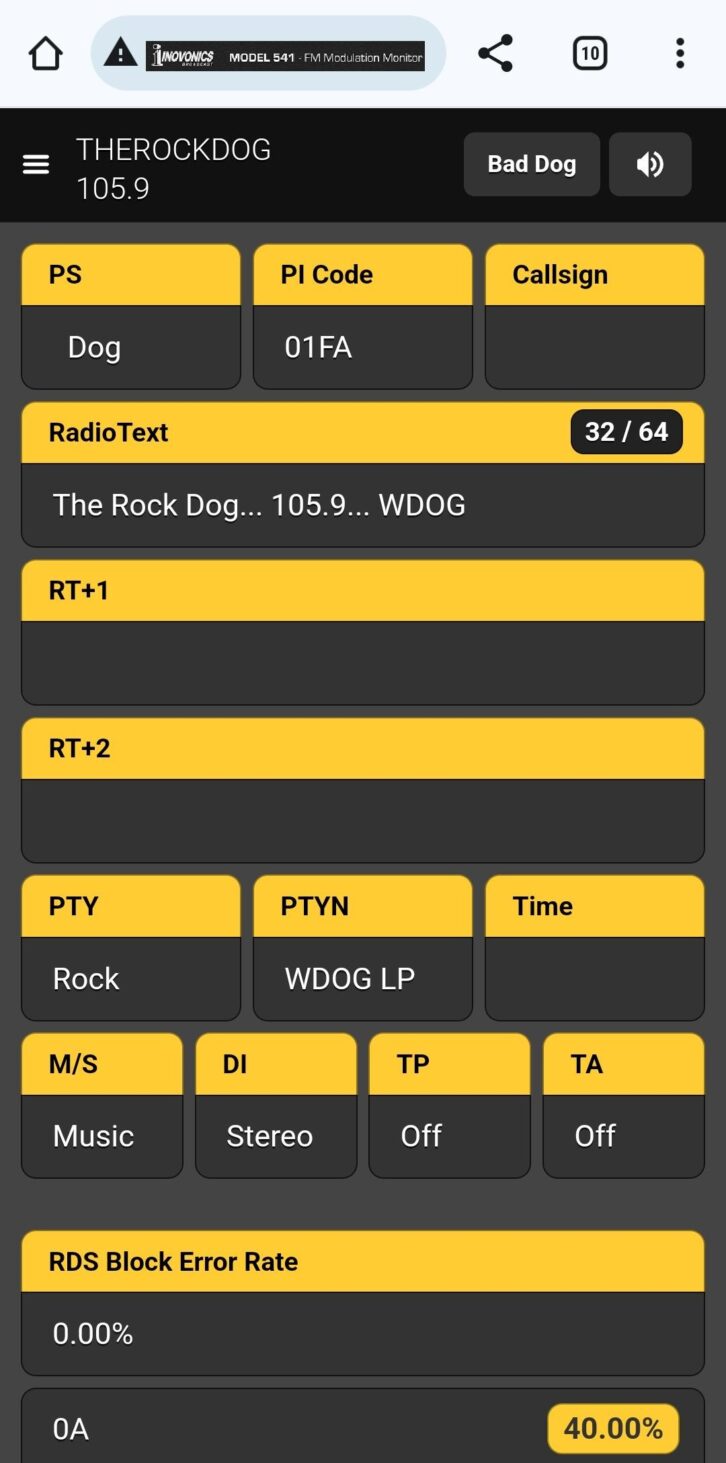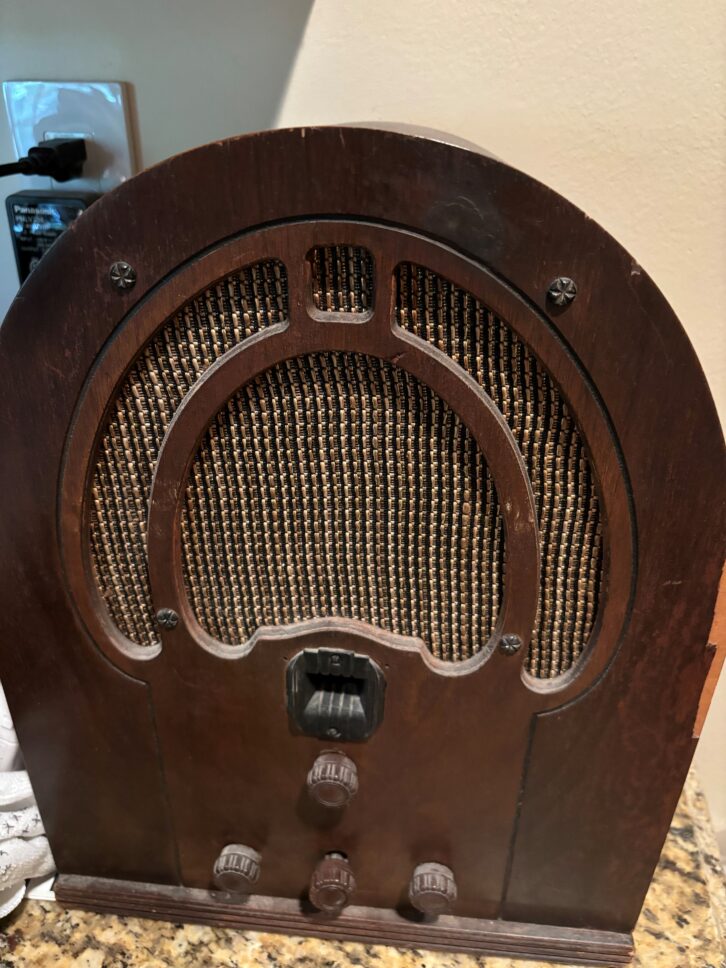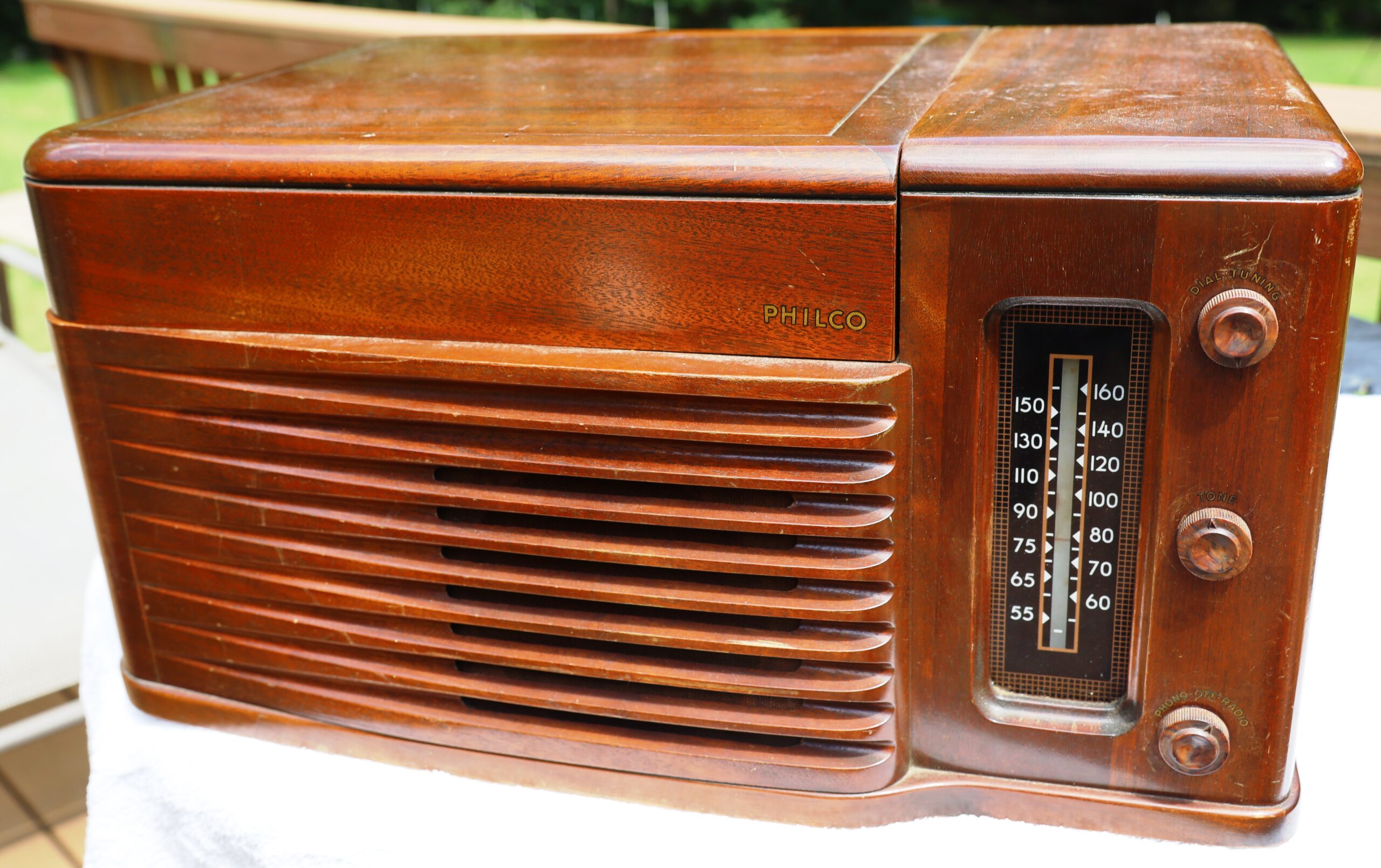In honor of National Radio Day, which is observed in the U.S. every August 20, Radio World’s editors and longtime contributors are sharing a behind-the-scenes look at how they listen to radio at home. From family heirlooms to emergency radios to trendy finds at Target, we’ve got it all.
You will find that the RW team also remains true to the motto “Never change a running system”. So enjoy this little trip into the past.
Here at Radio World, we know there’s no right or wrong way to listen in the comfort of your own home – as long as you do it! Happy National Radio Day.
By James Careless, RW staff: “This is my radio room on the second floor with access to a 100 foot long wire antenna in the attic above and a magnetic loop antenna on the right side of the table.
“My beloved but now broken Panasonic RF-2200 AM/FM/SW radio is on the top shelf on the left. Also visible (left to right) are a Grundig Mini PE 100 AM/FM/SW radio, a Baofeng BTECH UV-25X4 Mini Mobile 25 Watt Tri Band Mobile Radio, a Grundig replica AM/FM/SW radio, a Sangean ATS-909X2 AM/FM/SW radio, a CCrane CCRadio 3 AM/FM/HAM/Weather radio, a wind-up spring-powered Freeplay Plus AM/FM/SW radio (top, a classic), and my laptop connected to an SDRplay RSP-1B software-defined radio unit.
“The world map shows the locations of the SW stations I received. The North American map shows the AM stations I received. You can never have too many radios!”

By Carter Ross, RW staff: “On the bookshelf in my basement office sits my old Fisher MC-715 audio component system. I’ve had it since high school and it’s traveled with me from Louisiana to Maryland to Massachusetts and back to Maryland again. It’s dusty and scratched, but it still provides me with a steady stream of background music for NPR or college radio during my workday. I don’t remember how much it cost me in the 1980s, but I’m sure it wasn’t cheap for me, but it was worth every penny.”

By Paul McLane, RW Editor-in-Chief: “I listen to a variety of radios at home and in the car, but my old living room standby is this GE tabletop model. It predated HD Radio, Bluetooth, and pretty much anything else that wasn’t labeled FM or AM. We also have a Midland SAME Digital Weather/All Hazards Alert radio for the summer thunderstorms that are common here in Northern Virginia. And it gets a lot of use.”

By James O’Neal, RW staff: “This rather special radio is in my country house and is kept in a not very accessible part of the house. It is a Philco model 4-1256 and was made in 1948 (from the late 1930s Philco used a model numbering system where the first two digits indicate the year of manufacture). The radio’s tubes are all “Loctals”, short for “Lock-Ins”, a vacuum tube developed by Sylvania in the late 1930s and used for commercial (mobile radio) applications rather than consumer equipment. Philco was one of the few equipment manufacturers to use “Loctals”.
“This receiver is special to me because it is the radio I grew up with in the 1950s and ’60s. I was born in 1947, and we lived in a part of the country that didn’t get its first television station until I was six. That station, however, only ran for a few hours a day because AT&T Long Lines was busy connecting major metropolitan areas for network video; smaller markets had to wait. So network radio remained an important part of our family’s home entertainment well into the 1950s. I remember the many hours I spent in front of the Phico listening to Lone Ranger and other children’s shows after school.
“The Philco is special in another way, too, as it probably represents my parents’ first major purchase after World War II. In the years immediately following the end of fighting in 1945, consumer goods were scarce because U.S. manufacturing was geared primarily toward supplying the military for nearly four years. Consumers were eager to replace worn-out equipment with new models that were unavailable during that time. A slow return of industry to peacetime production and the hordes of GIs returning home with money to spend didn’t help the supply chain either.
“My parents have said more than once how lucky they were to find this Philco in a general store in Fulton, Arkansas, a very small town on the Red River about 14 miles from our home in Hope, Arkansas. (I have no idea how much the set sold for.)
“The Philco not only provided radio entertainment, but was also a record player with a changer that could play the 78 rpm records that were common at the time. My father was a music lover (he was a professional musician before the war) and also worked with wood. Using his woodworking skills, he built a stand or base for the Philco out of the top of a late 1920s or early 1930s console radio and added dividers to store his 78 rpm collection.”

By Dan Slentz, RW staff: “You may or may not like this one…but since I’m monitoring a 100 watt station 90 miles away, I’m using their (awesome) Inovonics 541 FM Modulation Monitor which can receive 10 private streams. Yes, it’s “not a radio” but it IS an off-air receiver (tuner) and the quality is true FM quality and almost the same as what listeners hear.
“This screenshot shows my Galaxy smartphone streaming the station, connected via Bluetooth to the car stereo in my Mazda RX5 SUV (with excellent sound system). It sounds so good that my wife reminds me we have neighbors when I get home. One note about this image: Where the web address would be above, I replaced it with the Inovonics Model 541 stamp (because I didn’t want to publish this private IP address for security reasons).”

By David Bialik, RW staff: “I got this 1934 Philco (below) in 1985 for $5. (Below the Philco photo) This 1962 Fisher 500-C still sounds great! It belonged to my dad. It has the optional walnut case. I wish I could get the replacement tuning knob or the knob cap for the volume contour.”


By Nick Langan, RW staff: “I’ve been carrying around portable FM radios since kindergarten, and by far the most amazing one out there is the TEF6686, which I bought in 2023. There’s an entire online community dedicated to supporting this device, including where to buy it and get firmware updates for it. They’re $129 on Amazon. The RDS display is particularly notable. I have two of them now. One of my units, which I have connected to my APS-13 antenna on the roof, can be controlled online. The other one you see pictured receives Philadelphia FMs just fine with a rod antenna about 30 miles away.
“As an FM DXer, I am also heavily involved in SDRs. On various antennas, I currently run four different ones, including two Airspy R2s and two SDRPlay RSPDuos. Using SDRUno software, I used an RSPDuo to receive 97.5 WIOB(FM) Mayaguez, PR, via e-skip propagation over local 97.5 WPEN(FM), pictured July 30.”


By Elle Kehres, deputy editor of RW: “For my birthday this month, my fiancé got me this retro-style portable radio from the Hearth & Hand collection at Target. I’m glad to see radios making their way back into popular chain stores. This little thing costs about $40 and is Bluetooth-enabled. Said Bluetooth isn’t the best, but the AM/FM beep is surprisingly good! Nice and clear. I love to take it along for a nice picnic when the weather is nice here in Atlanta, Georgia. Although I listen to online streams most of the time, who wouldn’t love a good tabletop radio?”

By Paul Kaminski, RW employee: “I listen to my Eton AM/FM/NOAA weather service radiothat I bought on sale a few years ago. As you would expect during hurricane season, it is tuned to the NWS station in Ruskin, Florida, which sounds an alarm when a warning is issued. It has simple controls, unlike some of the Radio I find it in newer vehicles.”

We want to hear from you! How do you listen to the radio at home? Send an email with funny pictures and stories to [email protected].
(See also: “What to do with the old antique radio?”)

